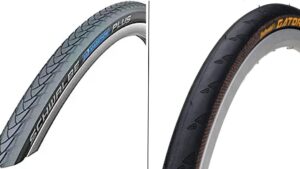7 Tips for Selecting the Perfect Bike Frame Size

Discover the secrets to selecting the perfect bike frame size with our comprehensive guide. From riding styles to professional advice, get the right fit.
Choosing the right bike frame size is the cornerstone of a comfortable and efficient cycling experience. Whether you’re a seasoned cyclist or a novice, the impact of an ill-fitted frame goes beyond mere discomfort—it affects your performance and overall enjoyment. In this guide, we’ll delve into seven crucial tips to help you navigate the process of selecting the perfect bike frame size. A well-fitted frame not only enhances your riding pleasure but also contributes to better control and reduced risk of injury. So, saddle up as we explore the key factors that will empower you to make an informed decision, ensuring your cycling adventures are marked by comfort and precision.
1. Understand Your Riding Style
Embarking on the journey to find the perfect bike frame size begins with a clear understanding of your intended riding style. Different styles of cycling demand varied frame designs to optimize performance and comfort. For enthusiasts of road biking, a frame tailored for speed and aerodynamics may be ideal, emphasizing a more aggressive riding posture. On the other hand, mountain biking aficionados may lean towards frames that prioritize stability and durability, crucial for navigating rugged terrains.
Commuters seeking a practical, everyday option might find a hybrid frame suits their needs, balancing features from both road and mountain bikes. Before diving into the specifics of measurements and dimensions, reflect on your cycling objectives. Are you chasing speed on smooth pavements, conquering challenging trails, or simply commuting to work? This initial consideration sets the stage for selecting a frame that harmonizes with your riding ambitions, ensuring your bike becomes not just a mode of transportation but a tailored extension of your cycling lifestyle.
2. Measure Your Inseam
One of the foundational elements in determining the right bike frame size is accurately measuring your inseam. The inseam, the distance from your crotch to the ground, plays a pivotal role in establishing the correct standover height for your bike. To measure your inseam, stand barefoot against a wall, placing a book snugly between your legs. Mark the height of the book on the wall and measure from the floor to the mark. This measurement provides a valuable baseline for choosing a frame size with an appropriate standover clearance.
Adequate standover height ensures that when you straddle the bike, there’s ample space between the top tube and your body, preventing uncomfortable encounters. Optimal standover clearance contributes to a safer and more controlled riding experience. Keep in mind that different types of bikes may have varying standover height requirements, so tailor your inseam measurement to the specific style of bike you’re considering. By starting with an accurate inseam measurement, you lay the groundwork for a well-fitted bike that aligns with both safety and comfort on every ride.
3. Consider Your Body Proportions
Choosing the perfect bike frame size extends beyond inseam measurements; it involves considering your unique body proportions. Cyclists with different body types may find varying frame geometries more comfortable. Take into account your torso length, arm length, and leg length when assessing potential frame sizes. For instance, if you have a longer torso, a frame with a more relaxed geometry might be preferable, promoting a more upright riding position.
Similarly, examining arm length aids in finding the right reach to the handlebars. A comfortable reach enhances control and reduces strain on your upper body during extended rides. Factoring in leg length helps strike a balance between pedal efficiency and overall stability. By understanding your body proportions, you can tailor your frame selection to align with your physical characteristics, promoting a harmonious and efficient riding posture. This personalized approach ensures that your bike isn’t just a piece of equipment but a seamless extension of your body, allowing for a more enjoyable and performance-driven cycling experience.

Hide A Bike Kit
Is your garage starting to become a mess? Save space by storing your bikes flat against the ceiling.
4. Test Ride Different Sizes
No amount of measurements can replace the invaluable insights gained from firsthand experience. Once you’ve narrowed down potential frame sizes based on your inseam and body proportions, take the time to test ride different bikes. Visit local bike shops or attend demo events to get a feel for various frame sizes and styles.
During test rides, pay close attention to how each size handles, assessing factors like maneuverability, stability, and overall comfort. Experiment with different riding positions to ensure that your chosen frame accommodates your preferred posture. Remember, a bike that feels comfortable in the first few minutes might behave differently on a longer ride, so aim for a comprehensive testing experience.
Testing multiple sizes allows you to fine-tune your preferences and identify the frame size that not only aligns with your measurements but also suits your riding style and comfort preferences. It’s the practical, hands-on approach that bridges the gap between theory and personal satisfaction, guiding you toward the ideal bike frame size for a more enjoyable and tailored cycling experience.
5. Consult A Bike Sizing Chart
In the digital age, where information is at your fingertips, bike sizing charts can serve as valuable tools in the quest for the perfect frame size. Manufacturers often provide sizing charts specific to their models, offering recommended frame sizes based on inseam measurements and height. These charts serve as practical starting points, guiding you towards suitable options.
To use a sizing chart effectively, gather your inseam measurement and height, then cross-reference them with the manufacturer’s recommendations. Keep in mind that while sizing charts provide useful general guidance, individual preferences and body proportions can vary. Therefore, consider the chart as a baseline, offering insights into the ballpark of frame sizes that might suit you.
Using a sizing chart not only streamlines the selection process but also aids in narrowing down options before heading to a bike shop for a test ride. It’s a convenient and efficient way to sift through the myriad of choices, ensuring that your potential frame sizes align with the manufacturer’s specifications and, ultimately, with your unique cycling requirements.
6. Seek Professional Advice
When precision matters most, turning to professional bike fitting services can make a significant difference in finding the ideal frame size. Certified bike fitting experts possess the knowledge and tools to assess your unique biomechanics and tailor a bike setup that maximizes comfort and performance.
Professional bike fittings typically involve an in-depth analysis of your body proportions, flexibility, and riding style. Through this process, experts can recommend specific frame sizes, handlebar configurations, and saddle positions to optimize your riding experience. This personalized approach is especially beneficial for individuals with unique physical considerations or those seeking the utmost precision.
While it may involve an additional investment, the long-term benefits of a professionally fitted bike can’t be overstated. Not only does it enhance your cycling comfort, but it also reduces the risk of injuries and improves overall efficiency. Before making your final frame size decision, consider consulting with a bike fitting professional to ensure that every aspect of your bike setup is tailored to your individual needs and biomechanics.

Hide-A-Bike Installation Guide
If you want to put together a Hide-A-Bike kit for yourself, just download these easy to follow, step-by-step directions, complete with a full hardware and parts list.
7. Read Reviews And Gather Feedback
Harness the power of collective wisdom by delving into user reviews and seeking feedback from fellow cyclists. Online platforms, forums, and community discussions are treasure troves of valuable insights into specific bike models and their compatibility with diverse body types. Real-world experiences from riders who share similar preferences or physical characteristics can offer valuable guidance in selecting the right frame size.
Pay attention to reviews that discuss comfort, handling, and overall satisfaction with the chosen frame size. Look for patterns or trends in feedback, and be open to considering different perspectives. This crowd-sourced information can provide a practical supplement to measurements and expert advice.
Additionally, engaging with the cycling community allows you to pose questions, share concerns, and benefit from the experiences of others. Whether you’re exploring a specific brand or model, the collective knowledge of the cycling community can be a valuable resource, helping you make a well-informed decision about the perfect bike frame size tailored to your individual needs and preferences.
Conclusion
In the pursuit of the perfect bike frame size, diligence pays off in every pedal stroke. Armed with the knowledge from these seven tips, you’re better equipped to make a decision that extends beyond mere measurements. Remember, a well-fitted frame is not just about comfort; it’s about elevating your cycling experience. By understanding your riding style, measuring your inseam, considering your body proportions, test riding different sizes, consulting sizing charts, seeking professional advice, and gathering community feedback, you pave the way for a harmonious connection between you and your bike. Let each turn of the wheel be a testament to the personalized joy that comes from choosing the perfect frame size for your cycling adventures.
Share This Article With A Friend
Did You Read This Whole Article?

You deserve a gift! Enter your email to receive a FREE copy of the Hide-A-Bike Installation Guide! And once a month we will send you a newsletter with the best deals on the internet for bicycle gear and accessories.
About Hide A Bike

Save space by keeping your bike flat against the ceiling with the original easy and convenient bicycle storage solution.
Thank You For Visiting!

You deserve a gift! Enter your email to receive a FREE copy of the Hide-A-Bike Installation guide. And once a month we will send you a newsletter with links to our best finds on bicycle gear and accessories.
Share This Article:
Most Popular Articles:
Article Categories:
Related Articles:

Your Ultimate Guide To Cycling For Fitness Training

Wheels Of Change: The Role Of Bicycles For Social Justice






